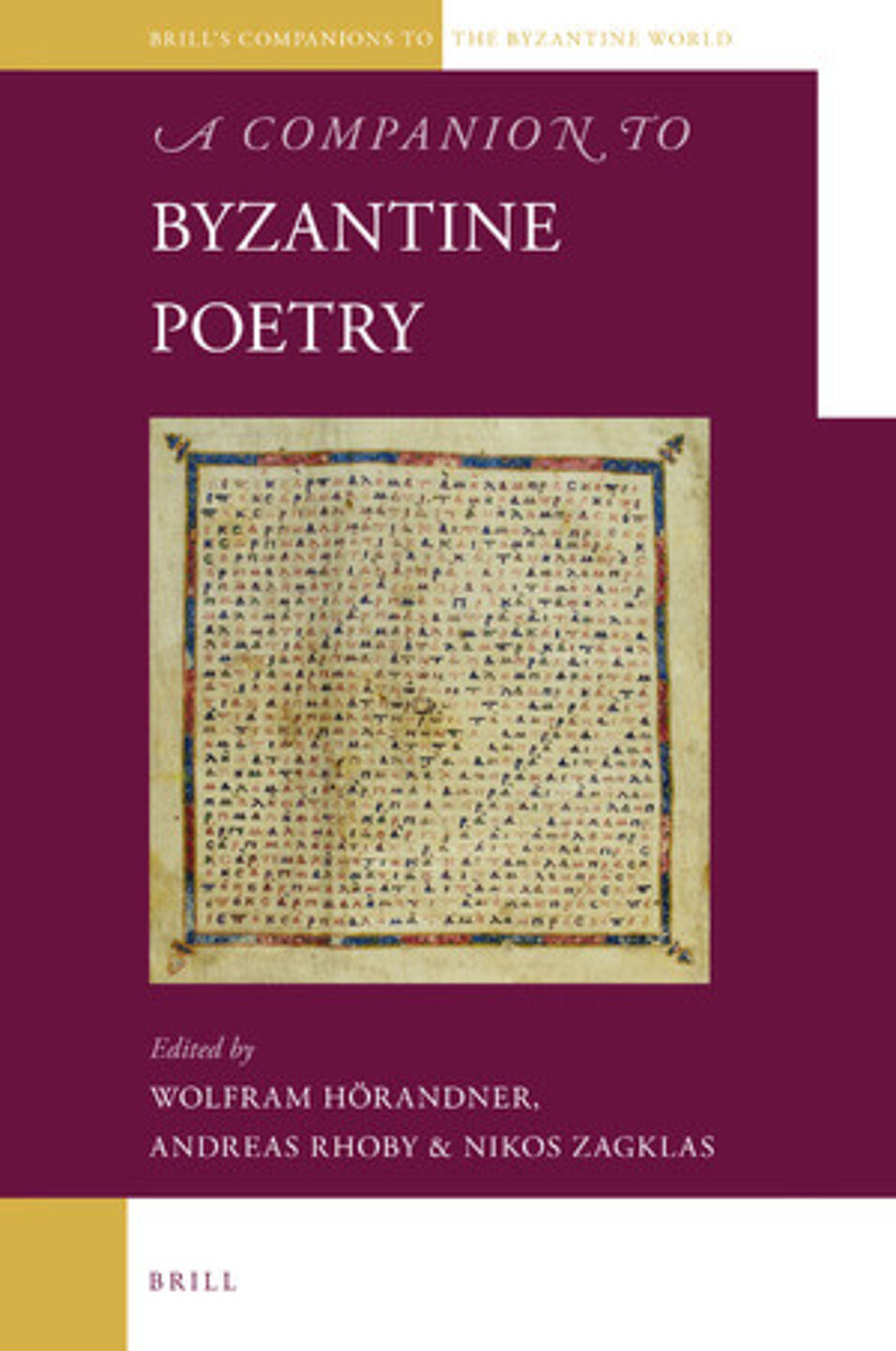Editors: Wolfram Hörandner, Andreas Rhoby & Nikos Zagklas
Series: Brill's Companions to the Byzantine World, Volume: 4
This book offers the first complete overview of Byzantine poetry from the 4th to the 15th century.
By bringing together 22 scholars, it explores the development of poetic trends and the interaction between poetry and society throughout the Byzantine millennium; it adrsses a wide range of issues concerning the writing and reading of poetry (such as style, language, metrics, function, and circulation); and it surveys a large number of texts by looking closely at their place within the social and cultural milieus of their authors. Overall, the volume aims to enhance our understanding of Byzantine poetry and shed light on its important place in Byzantine literary culture.
Contributors are Eirini Afentoulidou, Gianfranco Agosti, Roderick Beaton, Floris Bernard, Carolina Cupane, Kristoffel Demoen, Ivan Drpic, Jürgen Fuchsbauer, Antonia Giannouli, Martin Hinterberger, Wolfram Hörandner, Elizabeth Jeffreys, Michael Jeffreys, Marc Lauxtermann, Ingela Nilsson, Emilie van Opstall, Andreas Rhoby, Kurt Smolak, Foteini Spingou, Maria Tomadaki, Ioannis Vassis, Nikos Zagklas.
Publication Date: 6 May 2019
ISBN: 978-90-04-39288-5
Publisher: Brill
Pages: xiv, 566 pp.
Subjects: Medieval History, History, Greek & Latin Literature, Classical Studies, Classical Tradition & Reception Studies, Classical Studies, Intellectual History, History
Biographical Note
Wolfram Hörandner, Ph.D. (1966), University of Vienna, is Emeritus Professor of Byzantine literature. He has published extensively on Byzantine literature. His main publications include Theodoros Prodromos, Historische Gedichte (1974) and Der Prosarythmus in der rhetorischen Literatur der Byzantiner (1981).
Andreas Rhoby, PD Ph.D. (2000), University of Vienna, works at the Austrian Academy of Sciences, where he is deputy head of the Division of Byzantine Research. He is also Privatdozent at the University of Vienna. His major publication is the 4-volume corpus on Byzantine inscriptional epigrams.
Nikos Zagklas, Ph.D. (2014), University of Vienna, is Assistant Professor at the Institute of Byzantine and Modern Greek Studies, University of Vienna. He has published on Theodore Prodromos and Byzantine poetry (especially of the 12th century).

